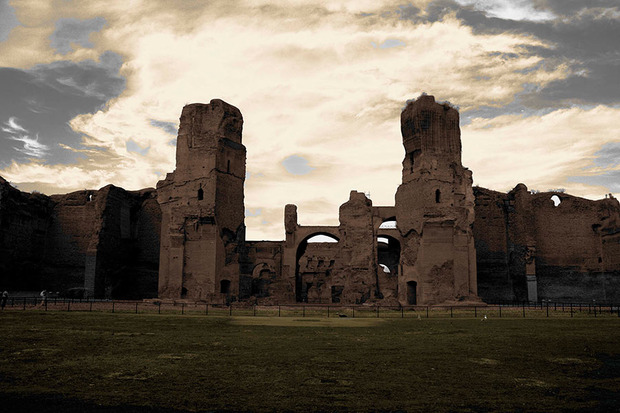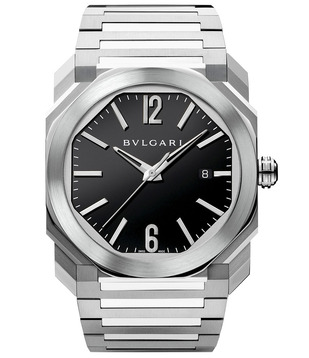The Bulgari Octo: Terme di Caracalla
A design inspiration for the watch, these Roman ruins are now a theater

Continuing our ongoing series with Bulgari, in celebration of the designs that inspired their Octo watch line, we’ve delved into the past, present and future of Rome’s Terme di Caracalla. This great structure, built around 212 AD, was reborn as a theater among ruins in 1937 and is the site of theatrical innovation to this day. As Bulgari found a way to reenvision the classic beauty of the octagon, so has Opera Roma with Terme di Caracalla.

Ornate details graced the interior of this vast complex, which frequently incorporated octagonal shapes into its design. The geometry of perfection, as Bulgari refers to it, gracefully manifested in the structure, as well as the strive for design reflecting eternity. Terme di Caracalla would inspire London’s St. George Hall, the original NYC Pennsylvania Station and, ultimately, Bulgari’s Octo. Over centuries, Terme di Caracalla morphed, and its usage with it, while forever being one of the most frequented set of Basque ruins in Rome.

Today, you’ll find 22 well-preserved columns among broken walls and archways and also: Opera. In the face of change across centuries, its essence remains as timeless and relevant as the octagon itself. The Octo, different from the crowd of watches today, but with grand architectural influence, shares these extensive values.
In 1937, the governor of Rome, Piero Colonna, presented the unconventional idea of an open air theater within the Baths of Caracalla. Commencing in August of that year, and nicknamed “teatro del popolo” (meaning “theater of the people”), it became an expression of rediscovery—both of the archeological site and also of popular taste in opera. On its opening night, it was the biggest stage in the world. Although the first season was brief; eight days with five performances total (three of Lucia di Lammermoor and two of Tosca), it really was just the beginning. Of equal importance, it was a refreshing modernized use of art within a design representing eternal values. This, too, stands as a fundamental reference point within the Octo’s development and identity.

Terme di Caracalla functioned as an important cultural hub, drawing global visitors to expansive under-the-air performances. Although it shuttered in 1993, the venue opened once more in 2001 and remains open today. Logistically, the operas are no longer performed amidst the ruins, but they now create an extraordinary frame for the Summer Teatro dell’Opera di Roma Opera and the Ballet Season. Much in the same way, the Octo’s shapely case encircles the magic of the movement within. Terme di Caracalla brought inspiration to throngs of people, across various iterations of usage. In doing so, it also inspired the beautiful designs of Bulgari’s Octo, as its octagonal construct expresses the evolutionary quest of a refined, classic composition.
The Bulgari Octo Collection, in stainless steel or pink gold, is available at Bulgari stores nationwide and at Bulgari. Prices range from $8,600 to $60,000.
Terme di Caracalla images courtesy of Opera Roma, Octo image courtesy of Bulgari













